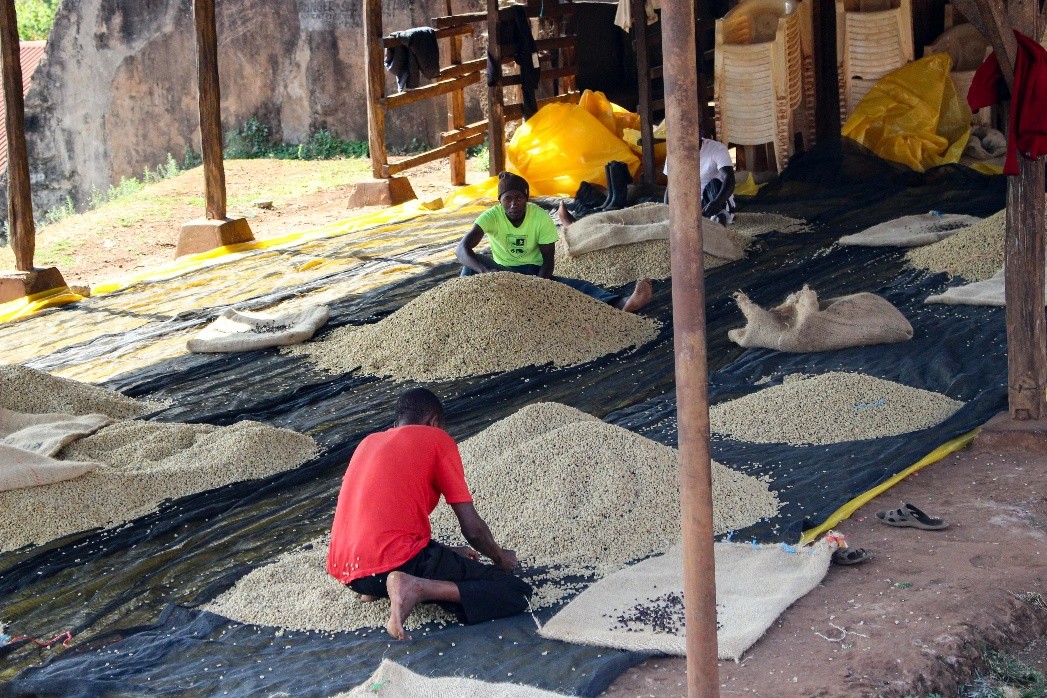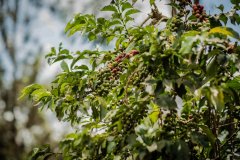Six Coffee Bean producing areas in Kenya | Coffee treatment and different flavor and taste characteristics of different producing areas
Kenya is famous for its washed beans. Although there have been a small number of pure sun-dried beans and honey treatment sites in recent years, Kenya has traditionally focused on selling fruits, and it is difficult to persuade coffee farmers to participate in refining or change trading habits, so almost all refining is done by washing stations. Fifty-five per cent of Kenya's coffee is produced by 700000 small farmers and sent to their small cooperatives for refined processing, with the rest from private estates, large farms or large cooperatives (companies). The small water washing station is made up of thousands of small farmers who send fresh coffee fruits during the harvest season. high-quality fruits and well-run cooperatives can help small farmers win up to 85% of the net income after sales (refers to the price of raw beans minus refining costs and marketing expenses)

The first stop to Kenya is usually the capital Nairobi, which is about 1661 meters above sea level, except that it is usually not too hot at noon. Tourists are often robbed in Nairobi, and they should pay special attention to their belongings and personal safety when they go out. The famous coffee producing area is not far from Nairobi, and the usual itinerary of the coffee circle is to arrive at the capital first and then go north.

1. Kiambu and Muranga
First of all, people will arrive at Qianbu and Mulangfu, the bright Kenyan acid that most people like.
II. Nieli
If you look north, you will enter the famous Nieri. The bright BlackBerry flavor and thick greasy feeling, coupled with the state and even floral aromas, make Kenyan coffee internationally famous.
Third, Qilin Yaha
From Nieri to the east along the Kenyan mountains, you can reach Qilinya, where the coffee beans also have a bright sour flavor, moderately greasy and delicate sweetness.
4. Anbu District (Embu)
To the east is Anbu District, where the acidity of the coffee is not as strong as that of Nieli, with a balanced, clear flavor and a good aftertaste.
5. Marchakos District (Machakos)
Not far from the Nairobi airport (south of the capital) is the Machakos district. The area has a late-rising trend. Beans are famous for their refreshing sour and delicate flavor, moderate touch and delicate and fresh tail rhyme.
6. Bungoma District of Kisi and Elgon
The coffee flavor of Qixi in the west and Bangyoma in Elgon Mountain is very different from that in the central producing areas, attracting buyers with medium-thick sweetness and milder flavor. The roasted hazelnut and mild fruit style at some washing stations in the area are also popular with buyers who do not like bright acidity.
During the actual visit to the cooperatives and processing plants in the producing areas, it was found that many of the processed batches whose samples had been sent to the sample room of the Nairobi Coffee Exchange for auction operations. Of course, those who have not yet sent samples can negotiate and purchase directly, commonly known as the second window transaction. Kenya's auction paternity system stems from the painful experience of the ancient dominance of London traders, but Kenya is famous for its multiple water, and even neighboring Ethiopia has learned from it. The following is the process from fruit acquisition to refined treatment, which is also the secret of Qingnia washing method.
Important Notice :
前街咖啡 FrontStreet Coffee has moved to new addredd:
FrontStreet Coffee Address: 315,Donghua East Road,GuangZhou
Tel:020 38364473
- Prev

Flavor and taste characteristics of Kenyan coffee beans | introduction to SL28 history and flavor brewing methods of coffee varieties
Sour, clean and beautiful, I believe most coffee lovers will think so when they drink Kenyan coffee. High quality acidity is the backbone and soul of Kenyan coffee. Kenyan coffee is sour and full, covering 29 flavors, including plum, blackcurrant, citrus, lime and grapefruit. One of the most famous is when
- Next

Kenya Coffee Bean Fruit acquisition and Refining processing Mode | description of SL28 and SL34 flavor and taste
African coffee has always been one of the best coffee producing areas in the world. Kenya, as a country that pays attention to coffee cultivation and quality management, needless to say the flavor of coffee beans. So what kind of management model makes it develop so rapidly? / I believe everyone is very curious about its coffee fruit acquisition and meticulous processing plan! First, the manor coffee farmers pick ripe fruits and send them one after another
Related
- Detailed explanation of Jadeite planting Land in Panamanian Jadeite Manor introduction to the grading system of Jadeite competitive bidding, Red bid, Green bid and Rose Summer
- Story of Coffee planting in Brenka region of Costa Rica Stonehenge Manor anaerobic heavy honey treatment of flavor mouth
- What's on the barrel of Blue Mountain Coffee beans?
- Can American coffee also pull flowers? How to use hot American style to pull out a good-looking pattern?
- Can you make a cold extract with coffee beans? What is the right proportion for cold-extracted coffee formula?
- Indonesian PWN Gold Mandrine Coffee Origin Features Flavor How to Chong? Mandolin coffee is American.
- A brief introduction to the flavor characteristics of Brazilian yellow bourbon coffee beans
- What is the effect of different water quality on the flavor of cold-extracted coffee? What kind of water is best for brewing coffee?
- Why do you think of Rose Summer whenever you mention Panamanian coffee?
- Introduction to the characteristics of authentic blue mountain coffee bean producing areas? What is the CIB Coffee Authority in Jamaica?

